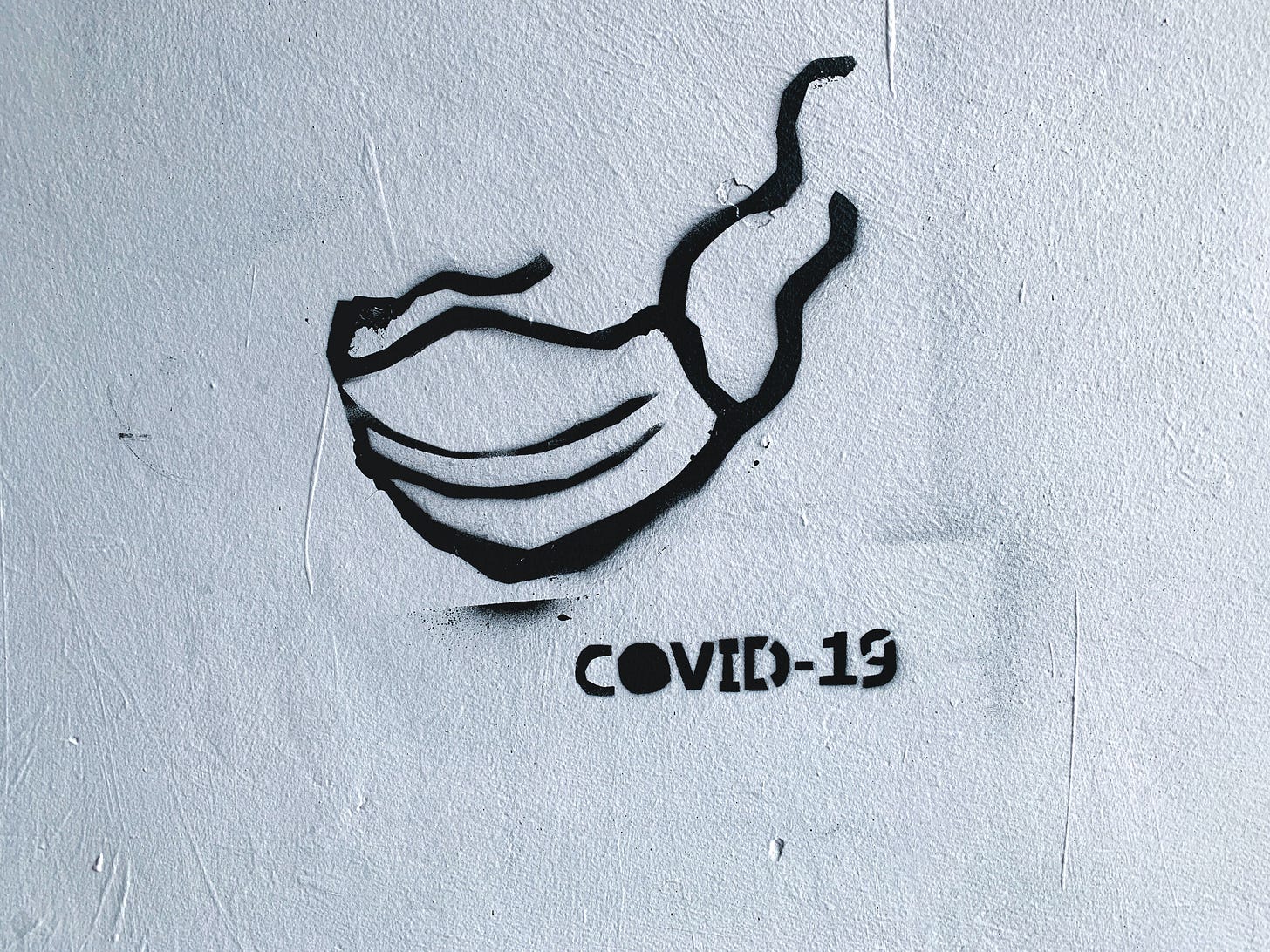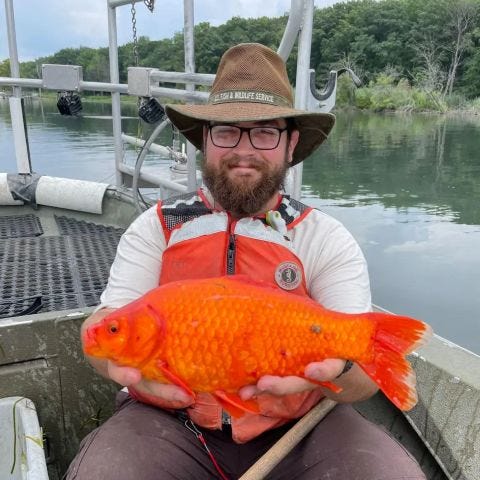There is a new kid on the COVID block. It is called NB.1.8.1 and it is getting special attention among the six new variants being monitored by the World Health Organization. But relax and don’t reach for your mask and hand sanitizer yet because public health officials say there is no reason to panic. In fact, despite a number of mutations seen over the last couple of months, none have moved from the monitoring stage to becoming a variant of concern.
The reason this new variant is getting additional attention is because while overall numbers remain low, there has been a significant rise in the proportion of the variant. It now accounts for 10.7% of the number of COVID genome sequences submitted to the WHO. It has been detected in 22 countries, but so far not in Canada though it has surfaced in the country south of us where recommendations for the COVID vaccine are being reduced. As we learned when COVID first hit, the virus doesn’t need a passport to find a new place to call home so we can expect to welcome it here soon.
Symptoms of the variant are the same as what we have seen in the past including a cough, fatigue, headache, change in your sense of smell, and diarrhea. Keeping it at bay is also the same as we have been advised in the past. If you have symptoms, stay at home until you feel better. Wash your hands, dig out your hand sanitizer, wear a mask if you are more susceptible, and get vaccinated because existing vaccine formulations will still help protect you against the variant. (A new Moderna vaccine has been approved in the U.S. and will be ready for the 2025-2026 respiratory virus season)
So yes, a new variant lives among us and we don’t need to be anxious about it. However the spread of the new variant is a reminder that COVID is now endemic, meaning that it is like the flu and will always be with is. It will also continue to generate new variants because that is one of the specialties of a virus.
Best way to keep it from becoming an epidemic again? A shot in the arm of common sense.
If you go to the corporate web pages for Meta – the owner of Facebook, Instagram, Threads, Messenger and WhatsApp – the company lays out its principles:
Give People a Voice
Build Connection and Community
Serve Everyone
Keep People Safe and Protect Privacy
Promote Economic Opportunity
Open the pages of TechCrunch and it might surprise you to learn that Meta is now in partnership with defense contractor Anduril which specializes in ‘transforming the military with advanced technology’. According to the TechCrunch article, the two are set to venture into the “potentially lucrative” military VR/AR/XR headset market. I guess that at least qualifies at an economic opportunity.
Anduril was founded by Palmer Luckey who designed the Oculus Rift virtual reality head-mounted display and founded Oculus VR to develop and market the device. In 2014 he sold Oculus VR to Facebook for $2 billion US and by 2017 had founded Anduril which now has billions of dollars in government contracts. Breaking Defense news quotes Luckey as saying the new deal is part of his mission and long turn goal “to turn warfighters into technomancers”. For the uninitiated, the billionaire is referring to the idea of a magician who combines magic and technology. It has nothing to do with warfare or soldiers and more to do with video gaming, role playing games, and Dr. Who. And of course, a couple of rich guys who see warfare as an economic game to be won or lost. Perhaps even more disturbing about these boys and their toys is Luckey’s view that in the “world we live in, I'd say it's a lot scarier, for example, to imagine a weapons system that doesn't have any level of intelligence at all."
The Washington Post says one of the first projects for the partnership will be the EagleEye Helmut for soldiers in the field which will give them “increased lethality, mobility, and situational awareness”.
The new venture may prove to be the next generation in improving battlefield weaponry, but augmented reality has been in the field for a few years now. Augmented reality rifle scopes provide real time information such as range, wind drift, target tracking, magnification, and low light assistance. It isn’t just to help the military. Weekend warriors who need an edge over low-tech deer can purchase them over the counter.
Some of these high tech systems such as SmartSight come with built in GPS and wireless connectivity to share and distribute information, and situational awareness to limit shooting within safety zones and to avoid friendly fire incidents.
In the 1800s a muzzle loader was considered accurate up to 90 metres or 100 yards though half that was practical in the heat of battle. Today a high-tech soldier can expect to have an accurate and lethal shot at 1,800 metres or 2,000 yards, which developers of new field weaponry say has the benefit of reducing loss of life on the battlefield.

We’ll stick with high-tech for a hit of space news about the plucky little Voyager 1 spacecraft launched in 1977 to fly by Jupiter and Saturn. It completed that part of the mission by 1980 and in 1988 had travelled far enough to become the most distant human-made object in space. It is still out there at 167.24 Astronomical Units or about 15.4 billion miles. It takes 23 hours for a signal to reach the earth from the aging spacecraft and its antenna has to be precisely aligned to get the job done. However, problems with the thrusters needed to maintain the orientation put that communication in jeopardy. The cause of the problem seemed to be internal heaters (it is really cold in deep space) which were considered dead in 2004. With complete failure a possibility, engineers puzzled through the problem and recently sent a series of commands to the spacecraft to restart the heaters. It was a nail-biting 23 hours to get the command there and another 23 hours to get the answer back, but the fix worked and for the moment at least, Voyager 1 has had “yet another miracle save”.
Meanwhile, no miracle save for SpaceX when its Starship prototype had another “rapid unscheduled disassembly” (how they say that with a straight face is beyond me). The rocket made it off the ground, but its first stage Super Heavy booster section blew up instead of splashing down into the Gulf of Mexico. The upper stage continued as planned but failed to open its payload doors to deploy Starlink satellite “simulators”, but it carried on until it sprang leaks and spun out of control. SpaceX put on a brave face noting that the upper stage flew further than the two previous flights so it was a “big improvement over last flight!”.
Against the back drop of reports of drug use by the company’s CEO Elon Musk and back lash to his role in cutting US government costs, the last few weeks have not been kind to SpaceX.
To date, NASA alone has invested more than $15 billion in SpaceX and there are ongoing contracts with other agencies including $1.8 billion to develop a spy satellite. Ongoing rapid unscheduled disassemblies could prove to be a financial problem as well as a technology issue.
I go to the gym at the University of Calgary several times a week. Campus life ebbs and flows over the year and right now the University is deep into convocation and graduation season. The gym hosts high school graduation ceremonies and the university’s own convocation events and facilities are booked solid for 2 weeks as everyone dons caps and gowns.
The tradition of the cap and gown began as a matter of necessity. Central heating is a relatively modern convenience from the 1800s, so 12th century universities were cold places for students and teachers. When it came time for the ceremonial procession of medieval scholars, caps and gowns were designed and worn as a practical way to keep warm in large spaces. The cap we see today evolved from hoods (now worn over the shoulders) which were warmer but as heating technology improved, the uniforms of academia became more symbolic of academic success. After the diplomas have been presented, graduates are allowed to move the tassel on their cap from the right to the left to symbolize the transition from student to graduate. The tossing of the caps into the air is a modern addition to the ceremony and is attributed to graduates from the U.S. Naval Academy in 1912 when graduates received a new cap to signify their new status and tossed the old ones away in celebration.
Individual institutions may have their own variations for colours and styles but in Canada we generally follow the North American Intercollegiate Code for Bachelors', Masters', and Doctors' degrees as you’ll see in this comprehensive list from U of C. Most schools use black as the base colour and customize the look off that base.
As the graduates arrive to collect their degrees the music you most often will hear is Pomp and Circumstance first performed in 1902 to honour the coronation of King Edward VII. NPR has a great podcast from 2003 that explains it all for you.
I barely remember my high school grad and my university celebration is a blur, but thanks to smartphones and social media, graduation day is never likely to be forgotten again.
For some of us, that might be a good thing!
Take a deep breath. Maybe you can smell newly cut grass or burgers cooking on the neighbour’s BBQ. Or maybe the exhaust of cars. What you can’t smell is environmental DNA. The air is full of it and a recent study says we can track everything from elusive bobcats to illicit drugs by analyzing airborne DNA. Researchers sucked up air in two study locations, one in Dublin and one in a forest in Florida.
A media release from the University of Florida said that with compact and affordable equipment, a researcher can capture air samples and using gene sequencing technology, have the results in less than a day. The Dublin samples yielded signs of human pathogens, common allergens, and drugs such as cannabis and magic mushrooms. The Florida samples found bobcats and venomous spiders.
The idea of collecting all-inclusive samples of environmental DNA (eDNA) from soil and water has become well established because living organisms are constantly shedding genetically rich bits of skin, mucus, waste, or pollen. Collecting water or soil samples can yield a treasure trove of genetic information about what species are part of a given ecosystem. An important aspect of eDNA is that it can be collected in a non-invasive and cost-effective manner. In some cases the sequencing can be so precise that it can identify individual animals – or people.
The Nature paper from the University of Florida researchers noted that eDNA can not only track genetic biodiversity, but offer advance warning of potentially harmful disease pathogens, monitor pest species, find evidence of antimicrobial resistance, and aid in narcotic surveillance.
In Canada, 12 new projects worth $11.3M were announced last month by Genome Canada to use eDNA technology to monitor environmental changes to help policy makers address health threats and biodiversity loss.
And while the technology behind it is complex, all it takes is a good sample of our air, water, and soil to start the process.
Telehealth was already showing it could improve health outcomes in people and when COVID struck, doctor visits by phone or video took a sharp rise in Canada and the United States. A new study shows that pet telehealth is also on the rise and can benefit Fluffy the cat and your favourite Fido.
Researchers at University of California, Davis worked with pet owners in Canada and the U.S. to see how beneficial video calls are for pet owners and their pets. The study zeroed in on a specific condition for cats and a UC Davis press release this week said that 95% of those who took part said they would pay for telehealth visits. Arthritis is common in cats and rates can be as high as 64 to 92 percent in cats over 10 years of age. The telehealth sessions were not meant to replace in-person visits and focused on advice, not medicine, so a registered veterinary technician could conduct the calls without a veterinarian. The results of the study were published in Frontiers in Veterinary Medicine and suggested pet owners preferred the video appointments to get advice and learn more about managing feline arthritis in the home. With 6.2 million Canadian households with a cat and 37-40 million in the US, the implications are significant.
The potential is not lost on the pet care industry.
In the US, the online pet pharmacy PetMed Express and virtual veterinary care provider Dutch announced a partnership to cover the country with a membership model service to diagnose and prescribe virtual care for pets. The idea of telehealth for pets has become attractive enough that it is becoming a popular and effective add-on to employee benefit programs.
With veterinary care costs rising, telehealth can help reduce the financial burden. Not surprisingly, the virtual pet care advice has also captured the attention of AI startups who want to further those savings. Vet-Ai for instance offers AI driven consultations, symptom checker, and online medication services. Google searches for “AI vet” and “AI pet care” grew by 143% and 107% respectively in just the last month according to a story in StartupHub this week.
In Ohio where veterinary telehealth is not allowed, legislators voted this week to change the law to make it legal. The committee discussion also revealed some of the downsides when a veterinarian said she had “encountered countless cases where verbal symptom descriptions pointed to one diagnosis, but physical examination revealed a different condition — or multiple concurrent problems “. Other potential downsides to the virtual vet visit include a breakdown in the trust factor that develops over time with in-person visits, more subtle signs of disease, and the possibility of higher costs when an in-person visit is still deemed necessary.
The future is more likely a hybrid model where virtual visits become just one part of an overall approach to keeping our four-legged friends happy and healthy.
Before getting into this story, I’ll declare my bias. A cute little orange goldfish swimming around in a little bowl with a couple of cute underwater features strikes me as cruel for the fish trapped in that limiting environment.
Releasing them into the wild however, is not an alternative.
A 9.2 hectare pond near Charlottetown, Prince Edward Island is in danger of being invaded by those cute little gold fish that likely ended up in the pond after their owners got as bored with the fish as the fish were in their little bowl. The problem is, goldfish are an invasive species and once in the wild can grow to 1 kilogram (2.2 pounds) and eat everything in sight including other fish, fish eggs, and insects while also digging up silt from the bottom of the pond. In short, they change the ecology of wherever they are and can end up in other waterways. A pond in Kitchener, Ontario is facing a similar problem, Sylvan Lake, Alberta has issued warnings about releasing goldfish, and in 2022 biologists said there were 20,000 goldfish in a stormwater pond near Toronto. Last year the U.S. Fish and Wildlife Service reported finding a 4kg (8.8 lb) goldfish in Lake Erie they nicknamed Megalodon.
Goldfish or Carassius auratus are not native to North America. They originated in Asia and became popular as an ornamental pet and traded across Europe. By the 1600s they had made it into the wild in the U.S. (likely by European colonists) and in the 1800s found a foothold (or is that finhold) in Canada. They have the rather colourful reputation of being “suck, spit, and pick” feeders. They suck in quantities of material from the bottom of the water. spit out unwanted bits, and then pick at the remaining food. This disrupts the existing ecosystem and spreads disease.
Getting rid of them isn’t easy. Netting, electrofishing (stunning them with electric probes), introduce predators, or treating the pond with Rotenone are options.
Better yet if you really do want to get rid of your goldfish try these alternatives.




